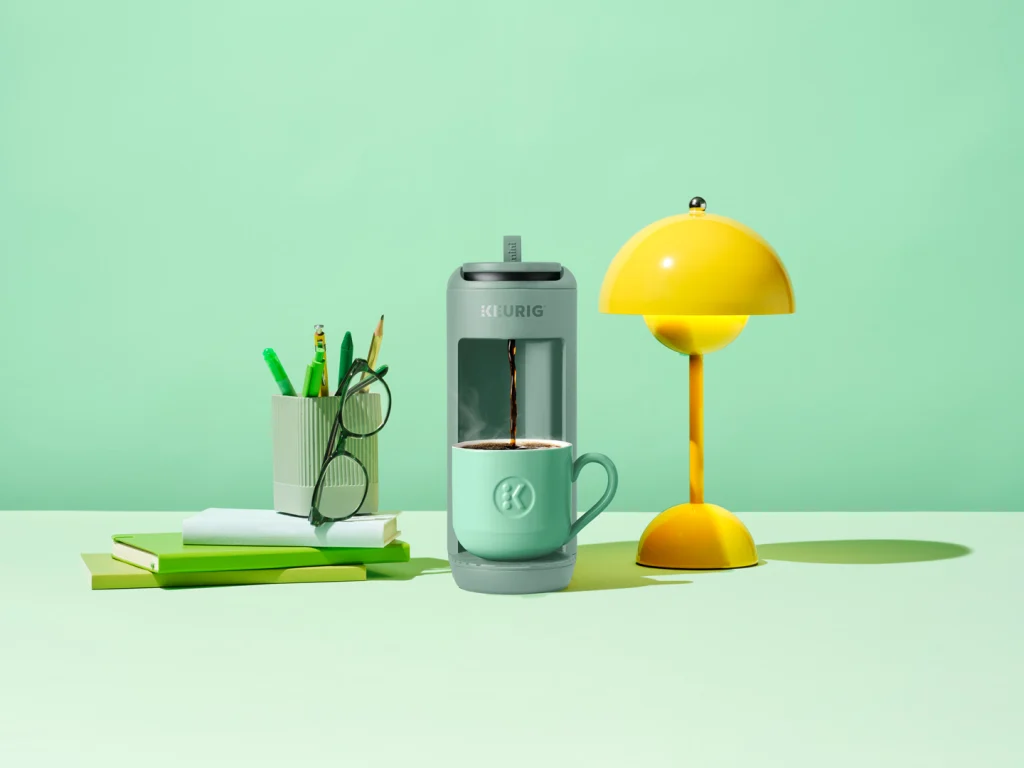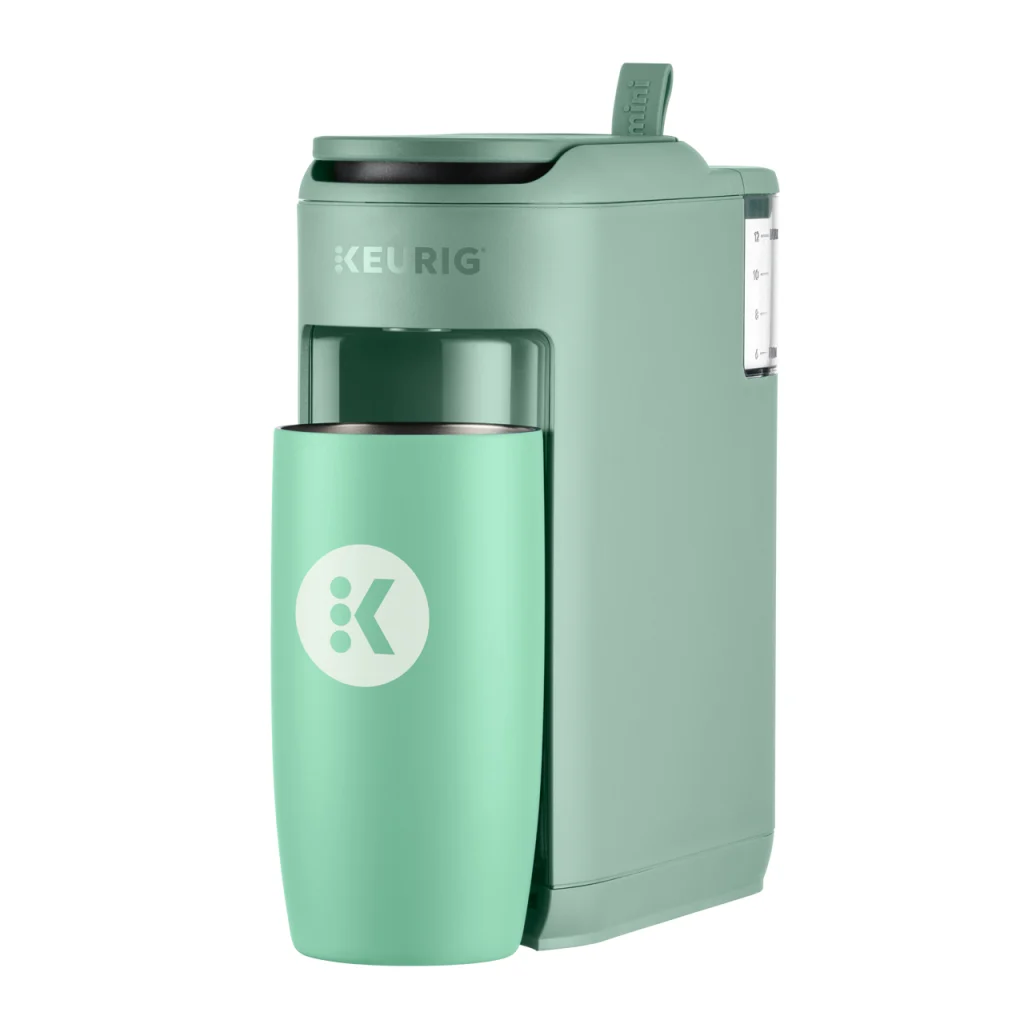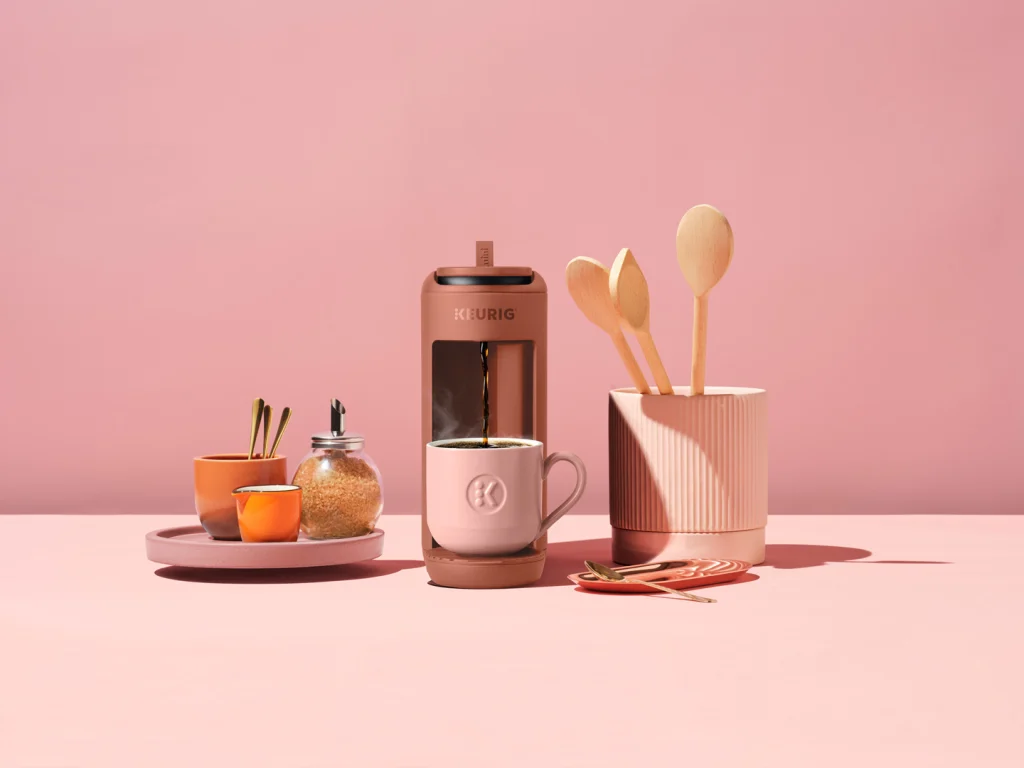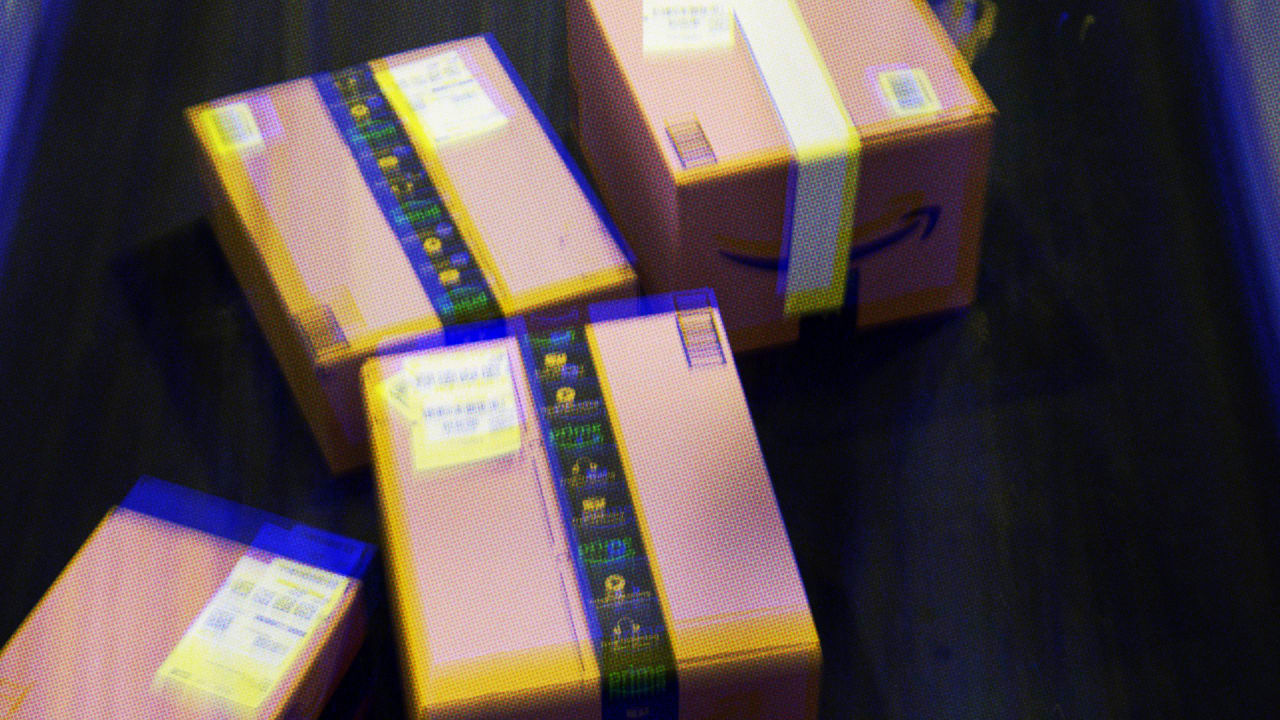Keurig’s tiny new coffee maker is cute enough to keep on your counter
Morgan Lombardi, Keurig’s senior director of product management, believes pod coffee makers have become too big, too mechanical, and maybe even a little bit ugly. “We’ve seen that coffee makers, including our own, have started to feel more and more like a machine,” she says. They are also getting increasingly bigger while kitchens are getting progressively smaller. Which is why Keurig is introducing the K-Mini Mate, a 4-inch-wide brewer that costs $79.99 and launches exclusively at Target starting June 29.After seven years watching consumer behavior at Keurig, Lombardi tells me she observed that people were starting to view their morning brew routine as an obligation rather than a moment of pleasure. Her team discovered that consumers wanted their morning coffee ritual to feel like “this wonderful little moment”—rather than a mechanical “click-CLACK!” chore. The coffee maker needed to be gentler to the eye and to the touch, and it also needed to be much smaller. Both were hard challenges, she says, because the current puncturing mechanisms for Keurig’s brewers are too unwieldy to allow for a subtler, smaller design.[Photo: Keurig]The space problem drives everythingKitchen real estate drives modern appliance design decisions. “Nobody’s kitchen is getting any bigger,” Lombardi explains. Yet, coffee makers remain essential equipment to turn on human brains in the morning, and they need to be there 24/7—not taken out of a cabinet. They require permanent positioning, she says, creating a design constraint that forces manufacturers to think smaller.The most significant technical challenge to achieve the smaller footprint involved redesigning what Keurig calls the puncture mechanism. Standard Keurig brewers use a mechanical crunching motion to pierce K-Cup pods; a big handle pushes down to move the array of needles that open holes in that pod. If you have ever used a Keurig machine, it feels a little like pushing down the handle to turn off the Death Star. “The standard Keurig mechanism feels like you are crunching something inside,” Lombardi says.[Photo: Keurig]To enable the smaller brewer size, the puncturing mechanism needed to be much shorter: “The space between the brewer mechanism and the bottom of the brewer needed to be able to fit a travel mug [around 7 inches],” she says.[Photo: Keurig]They managed to reengineer the mechanism and change its position, which allowed them to get rid of the crunching handle and turn it into a flat surface that matches the cylindrical shape of its front. The new mechanism doesn’t give you the same hard resistance as the previous one, which allowed Keurig to use soft-spring open and closing. She thinks that this alone creates a feeling that’s more human, “making the act of making coffee more like a soft handshake” and less like destroying coffee pods inside a plastic crunching machine.[Photo: Keurig]A new design languageThe resulting machine is much more attractive. The design language features softer radius curves compared with Keurig’s standard angular aesthetic. The brewer uses rubberized touchpoints alongside ABS plastic construction to make it feel softer to the touch, too. A small rubberized tab on the top helps you to take the water deposit out, requiring just a finger to easily remove the top. The water reservoir also sits flat on counters without tipping over, like a water jar.[Photos: Keurig]The result—available in black, red, and green—is a machine that brews up to 12 ounces of coffee and is about 33% smaller than Keurig’s previous smallest model. One that, perhaps more importantly, doesn’t look like your great aunt’s brewer from yesteryear, but like a modern piece of design.The company’s research revealed that younger consumers entering the coffee-maker market prioritize simplicity and visual appeal over advanced features. Generation Z buyers need coffee makers for college or first apartments, but they don’t have strong preferences about brewing functionality.[Photo: Keurig]According to Lombardi, consumer response has been great during testing. From initial foam prototypes through in-home use studies, “people fell in love with this product—and they’re saying, you know, it’s small. I haven’t seen anything like this. It’s just really cute. When can I have it?”She also tells me that the K-Mini Mate represents the first product in what will become Keurig’s new visual brand language across its entire lineup. “Keurig updates its visual brand language every five years to match shifting consumer preferences,” she points out. Future models will incorporate similar aesthetic principles while adding features like larger water tanks. So, that’s definitely good news for Keurig fans everywhere.

Morgan Lombardi, Keurig’s senior director of product management, believes pod coffee makers have become too big, too mechanical, and maybe even a little bit ugly. “We’ve seen that coffee makers, including our own, have started to feel more and more like a machine,” she says.
They are also getting increasingly bigger while kitchens are getting progressively smaller. Which is why Keurig is introducing the K-Mini Mate, a 4-inch-wide brewer that costs $79.99 and launches exclusively at Target starting June 29.
After seven years watching consumer behavior at Keurig, Lombardi tells me she observed that people were starting to view their morning brew routine as an obligation rather than a moment of pleasure. Her team discovered that consumers wanted their morning coffee ritual to feel like “this wonderful little moment”—rather than a mechanical “click-CLACK!” chore. The coffee maker needed to be gentler to the eye and to the touch, and it also needed to be much smaller. Both were hard challenges, she says, because the current puncturing mechanisms for Keurig’s brewers are too unwieldy to allow for a subtler, smaller design.
The space problem drives everything
Kitchen real estate drives modern appliance design decisions. “Nobody’s kitchen is getting any bigger,” Lombardi explains. Yet, coffee makers remain essential equipment to turn on human brains in the morning, and they need to be there 24/7—not taken out of a cabinet. They require permanent positioning, she says, creating a design constraint that forces manufacturers to think smaller.
The most significant technical challenge to achieve the smaller footprint involved redesigning what Keurig calls the puncture mechanism. Standard Keurig brewers use a mechanical crunching motion to pierce K-Cup pods; a big handle pushes down to move the array of needles that open holes in that pod. If you have ever used a Keurig machine, it feels a little like pushing down the handle to turn off the Death Star. “The standard Keurig mechanism feels like you are crunching something inside,” Lombardi says.
To enable the smaller brewer size, the puncturing mechanism needed to be much shorter: “The space between the brewer mechanism and the bottom of the brewer needed to be able to fit a travel mug [around 7 inches],” she says.
They managed to reengineer the mechanism and change its position, which allowed them to get rid of the crunching handle and turn it into a flat surface that matches the cylindrical shape of its front. The new mechanism doesn’t give you the same hard resistance as the previous one, which allowed Keurig to use soft-spring open and closing. She thinks that this alone creates a feeling that’s more human, “making the act of making coffee more like a soft handshake” and less like destroying coffee pods inside a plastic crunching machine.
A new design language
The resulting machine is much more attractive. The design language features softer radius curves compared with Keurig’s standard angular aesthetic. The brewer uses rubberized touchpoints alongside ABS plastic construction to make it feel softer to the touch, too. A small rubberized tab on the top helps you to take the water deposit out, requiring just a finger to easily remove the top. The water reservoir also sits flat on counters without tipping over, like a water jar.
The result—available in black, red, and green—is a machine that brews up to 12 ounces of coffee and is about 33% smaller than Keurig’s previous smallest model. One that, perhaps more importantly, doesn’t look like your great aunt’s brewer from yesteryear, but like a modern piece of design.
The company’s research revealed that younger consumers entering the coffee-maker market prioritize simplicity and visual appeal over advanced features. Generation Z buyers need coffee makers for college or first apartments, but they don’t have strong preferences about brewing functionality.
According to Lombardi, consumer response has been great during testing. From initial foam prototypes through in-home use studies, “people fell in love with this product—and they’re saying, you know, it’s small. I haven’t seen anything like this. It’s just really cute. When can I have it?”
She also tells me that the K-Mini Mate represents the first product in what will become Keurig’s new visual brand language across its entire lineup. “Keurig updates its visual brand language every five years to match shifting consumer preferences,” she points out. Future models will incorporate similar aesthetic principles while adding features like larger water tanks. So, that’s definitely good news for Keurig fans everywhere.

































































![https //g.co/recover for help [1-866-719-1006]](https://newsquo.com/uploads/images/202506/image_430x256_684949454da3e.jpg)






































































